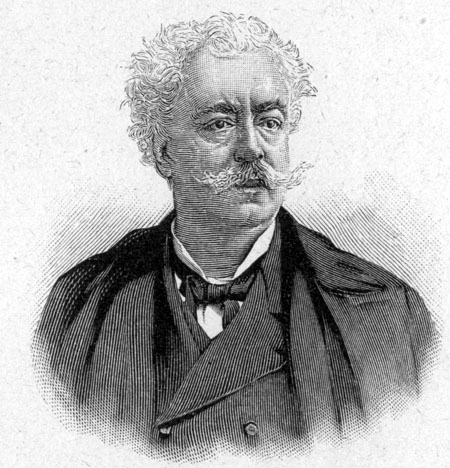- Edmondo De Amicis
Infobox Writer
name =Edmondo De Amicis
 |thumb|right|200px
|thumb|right|200px
caption =
birthdate = birth date|1846|10|21|df=y
birthplace =Oneglia ,Italy 1
deathdate = death date and age|1908|3|11|1846|10|21|df=y
deathplace =Bordighera ,Italy
occupation = Novelist, Journalist, Short-story writer, Poet
genre =Children's literature
movement =
influences =
influenced =
website =Edmondo De Amicis (
October 21 ,1846 —March 11 ,1908 ) was an Italian novelist, journalist, poet and short-story writer. His best-known book is the children's novel "Heart" (or "Cuore").Early career
Born in
Oneglia (part of the city of Imperia), he went to military school inModena , and became an officer in the new Italian Kingdom. De Amicis fought in the battle of Custoza during the Third Independence War, a defeat of Savoy forces against theAustrian Empire ; the spectacle left him disappointed, and contributed to his later decision to leave military life.In
Florence , he wrote his first sketches dealing with his frontline experience, collected as "La vita militare" ("Military Life", 1868), and first published by the journal of the Ministry of Defense, "L'Italia Militare". In 1870, he joined the staff of the journal "La Nazione " inRome , and his correspondence at the time later served as base for his travel writings: "Spagna" (1873), "Olanda" (1874), "Ricordi di Londra" (1874), "Marocco" (1876), "Costantinopoli" (1878), "Ricordi di Parigi" (1879). A new edition of "Costantinopoli" was published in 2005, with a foreword byUmberto Eco ."Heart" success
"Heart" was issued by Treves on
October 17 ,1886 , the first day of school in Italy. Its success was immense: in a few months it was printed in 40 Italian editions and translated into tens of languages. Its praise for the creation of Italy in the previous decade contributed to its reception, but also made it draw criticism from some Roman Catholic politicians for failing to depict the nature of theHoly See 's opposition to the annexation of Rome.Later years
The nationalist message visible in De Amicis' works was soon fused with a commitment to
socialism (a trend visible within "Heart"). In 1896, he adhered to theItalian Socialist Party .His later works include: "Sull'oceano" (1889), dealing with the plight of Italian emigrants overseas, "Il romanzo di un maestro" (1890), "Amore e ginnastica" (1892), "Maestrina degli operai" (1895), "La carrozza di tutti" (1899), "L'idioma gentile" (1905), and "Nuovi ritratti letterari e artistici" (1908). At the same time, he contributed to the
Turin -based "Il Grido del Popolo " - his articles were collected as "Questione sociale" ("Social Issues", 1894).De Amicis died in
Bordighera . His last years were marked by tragedy and spent in reclusion; he was marked by his mothers' death, and the frequent conflicts with his wife - ultimately, these were the source of an even greater emotional shock for De Amicis, as they led to his son Furio's suicide (as schoolchildren, Furio and his brother Ugo had served as inspiration for "Heart").External links
* [http://jv.gilead.org.il/evans/De_Amicis_interview_with_JV.html Edmondo de Amicis, "A Visit to Jules Verne and Victorien Sardou"]
* [http://www.intratext.com/Catalogo/Autori/AUT133.HTM De Amicis' works] : text with concordances and frequency list
* [http://xoomer.alice.it/ildeamicis/index.html De Amicis] : the full text of Cuore
Wikimedia Foundation. 2010.
